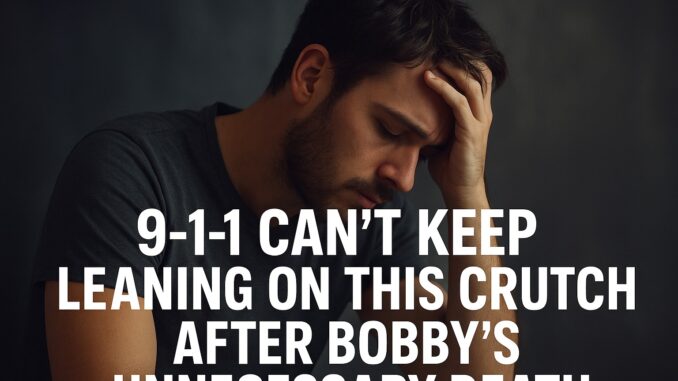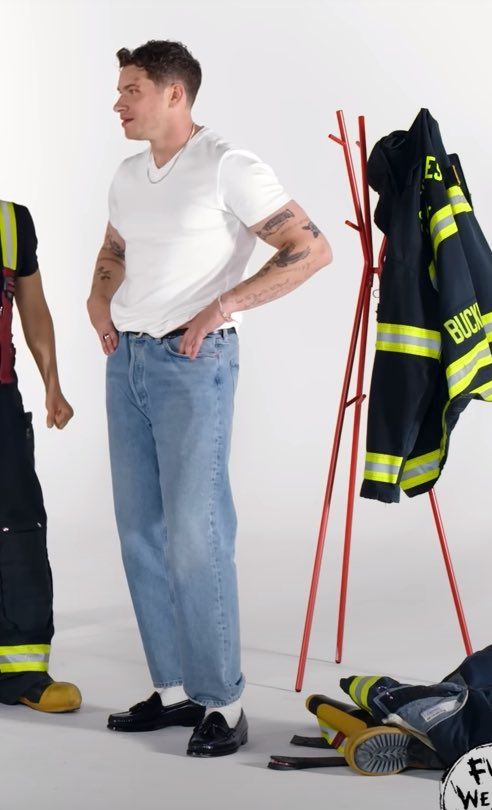
When tragedy strikes, we naturally look for someone to blame — but sometimes the system itself is the culprit. Bobby’s unnecessary death wasn’t just a heartbreak — it was a wake-up call. We’ve been leaning on 9-1-1 like it’s a catch-all solution, a crutch. But that crutch has splintered. It’s time to talk about what went wrong, why it happens again and again, and what we absolutely must do to prevent it.
In this article, we’ll dive deep: what roles 9-1-1 was supposed to play, where it failed Bobby, what systemic crutches we lean on, and how we rebuild. You’ll walk away not just outraged — empowered.
The Crutch of 9-1-1: What We Expect — and What It Actually Is
9-1-1’s Role in Modern Society
We treat 9-1-1 like an all-purpose crisis responder: medical, police, fire, mental health. We expect it to show up immediately, fixed, healed, resolved. That level of power is almost magical. But magic isn’t real — systems are.
The Myth of Unbreakable Infrastructure
We act as if 9-1-1 is indestructible. Underfunded? Overworked? Full of gaps? Those are “glitches,” we say — until one glitch kills someone like Bobby. When the myth cracks, trust erodes.
Bobby’s Tragic Story — More Than a Headline
What Happened to Bobby
Let’s walk through the timeline. What indicators were there? Did calls go unanswered, was help delayed, or was the wrong type of help dispatched? These details aren’t just forensic fodder — they’re #data.
Red Flags That Were Ignored
Often, there are warning signs — repeated calls, mental health concerns, chronic illness. In Bobby’s case, those red flags were treated like nuisances, not urgent symptoms.
Systemic Patterns in Bobby’s Case
Bobby’s story is shocking — but it also repeats. We’ve seen similar deaths where crisis lines falter, where triage falls apart, where the “crutch” snaps under pressure.
Why Relying on 9-1-1 Is a Dangerous Habit
Overburdened Infrastructure
Emergency systems are chronically understaffed and underfunded. Call volume outpaces capacity, resources are finite, and fatigue sets in.
One-size-fits-all Responses Fail
Dispatch protocols are rigid. They often default to police or EMTs — even when what you need is a counselor, a social worker, or a de-escalator. That mismatch can kill.
Blind Spots: Rural Areas, Vulnerable Populations
In remote or underserved areas, 9-1-1 may be far away. Marginalized communities often face language barriers or distrust, making the crutch even more brittle.
Communication Breakdowns
From caller to dispatcher to first responder, information gets lost. Miscommunication is the silent killer in many emergency failures.
The Anatomy of Collapse — How the Crutch Fails
Call Center Overloads & Staffing Shortages
When too many calls come in and too few operators are available, triage slips. A “low urgency” call might actually be the most important one.
Triage Algorithms & Protocols
Rigid triage rules — “if X, send Y” — can blind workers to nuance. Algorithms don’t interpret fear, tone, or desperation.
Response Time Gaps
Time is life. If response times balloon, critical windows slam shut — especially in medical or violent emergencies.
Coordination Failures Among Agencies
Police, EMS, mental health, social services — all must overlap. When they don’t, you end up in a gap where nobody’s accountable.
How Bobby’s Case Lives in Others’ Stories
Similar Incidents Across Communities
Across cities and states, we see echoes of Bobby. Someone calls for help — but response is late, communication fragmented, rescue ineffective. The crutch doesn’t hold.
Systemic Racism, Bias & Access Inequity
Emergency systems don’t operate on a neutral field. Bias influences who is believed, who is dismissed, who is delayed. These are invisible fractures in the crutch.
Mental Health Crises Treated as Crime Scenes
Too often, mental health calls are treated like criminal incidents. That’s putting a square peg into a round hole — the crutch bends, then breaks.
What We Must Stop Doing — Before We Build Anew
Stop Trusting 9-1-1 as the Sole Safety Net
It’s unfair to put all weight on one system. We have to let go of that dependency and distribute responsibilities.
Stop Over-centralizing Emergency Powers
Dispatchers and first responders shouldn’t be expected to be miracle workers. Specialization must exist — mental health professionals, crisis mediators, trauma responders.
Stop Ignoring Preventive Measures
Prevention beats reaction. Community health programs, early intervention, mental wellness support — these reduce emergencies before they happen.
Building Better Supports to Replace the Crutch
Diversify Crisis Response Teams
Create teams beyond cops and EMTs: mental health professionals, social workers, peer support. Let them answer the 9-1-1 calls they’re built for.
Invest in Telehealth & Mobile Crisis Units
Not every crisis needs a fire truck. Telehealth and mobile crisis units can go further, faster, with less risk.
Empower Community & Peer-Led Initiatives
Local networks of trained citizens can act as first responders when it’s not life or death. Think neighborhood crisis teams.
Strengthen Dispatch Communication & Triage Training
Upgrade the call scripts. Teach dispatchers to listen for nuance. Train them to route calls intelligently. Remove rigid protocols that ignore context.
Use Data & Analytics to Predict Hotspots
If we can anticipate crisis zones, we can pre-position resources. Use patterns, not surprises.
Legal & Policy Reform
Mandate that mental health calls aren’t automatically flagged as police issues. Require reporting of system failures. Enforce accountability.
Barriers, Pushbacks & How to Overcome Them
Funding Constraints
Change costs money. But so does inaction. Redirect budgets, public-private partnerships, philanthropic investment — that’s how we scale.
Institutional Resistance
Systems resist change. We’ll hear “precedent,” “liability,” “tradition.” We must push through with evidence and advocacy.
Public Skepticism & Fear
People worry: “If not 9-1-1, then what?” We have to communicate transition clearly, show successful models, and reassure.
Logistical Complexity
Coordinating multiple agencies is messy. But coordinated dysfunction is worse than messy coordination.
Success Stories & Models Worth Copying
CAHOOTS in Eugene, Oregon
A pioneering mobile crisis program that dispatches mental health professionals — not police — for nonviolent emergencies. It saved taxpayer dollars and lives.
UK’s NHS Crisis Lines and Mental Health Response
In parts of the UK, crisis hotlines are integrated with health services — not isolated in policing systems. They offer a blueprint worth adapting.
Community-Driven Models in Low-Resource Areas
In some developing communities, trained locals act as mental health first responders. Lean, flexible, human-first — a fragile but potent alternative.
Roadmap to Change — What You, I & Policymakers Can Do
Advocate for Local Pilots
Push your city or county to test mobile crisis teams. Demand accountability and transparency.
Volunteer, Educate, Build Awareness
Community awareness changes culture. Teach neighbors, participate in crisis response trainings, demand reforms.
Support Legislation & Budget Shifts
Vote for bills that fund crisis alternatives. Lobby local government to reallocate emergency funds.
Push for Data Disclosure
We need data to see where the crutch cracks. Insist on public reports of 9-1-1 outcomes, failures, response times.
Engage with Media & Storytelling
Keep spotlight on stories like Bobby’s. Every time one dies, news hits—and then fades. Keep the narrative alive so change remains inevitable.

Why We Can’t Wait — The Human Cost of Inaction
More Bobby Stories Are Unfolding Right Now
Every delay kills. Every misrouted call is a bet against life. The crutch can’t carry another.
Erosion of Public Trust
Each failure chips away at trust in institutions. If people stop believing 9-1-1 can help, panic and chaos follow.
Financial & Social Fallout
Failed crisis response costs far more in lawsuits, post-trauma care, lost lives, and broken communities.
Conclusion
Bobby’s unnecessary death wasn’t an anomaly — it was an inevitable failure in a system built on illusion. We have been treating 9-1-1 as a miracle crutch, expecting it to carry every burden. But the crutch is failing, snapping under pressure, and spilling lives like Bobby’s into the margins.
We must shift from dependence to diversification: deploy crisis teams, restructure dispatch, amplify community response, reform policy, and demand accountability. It won’t be easy, but the alternative is unconscionable.
We can’t lean on 9-1-1 forever. We have to build supports strong enough to catch us when it falls.
